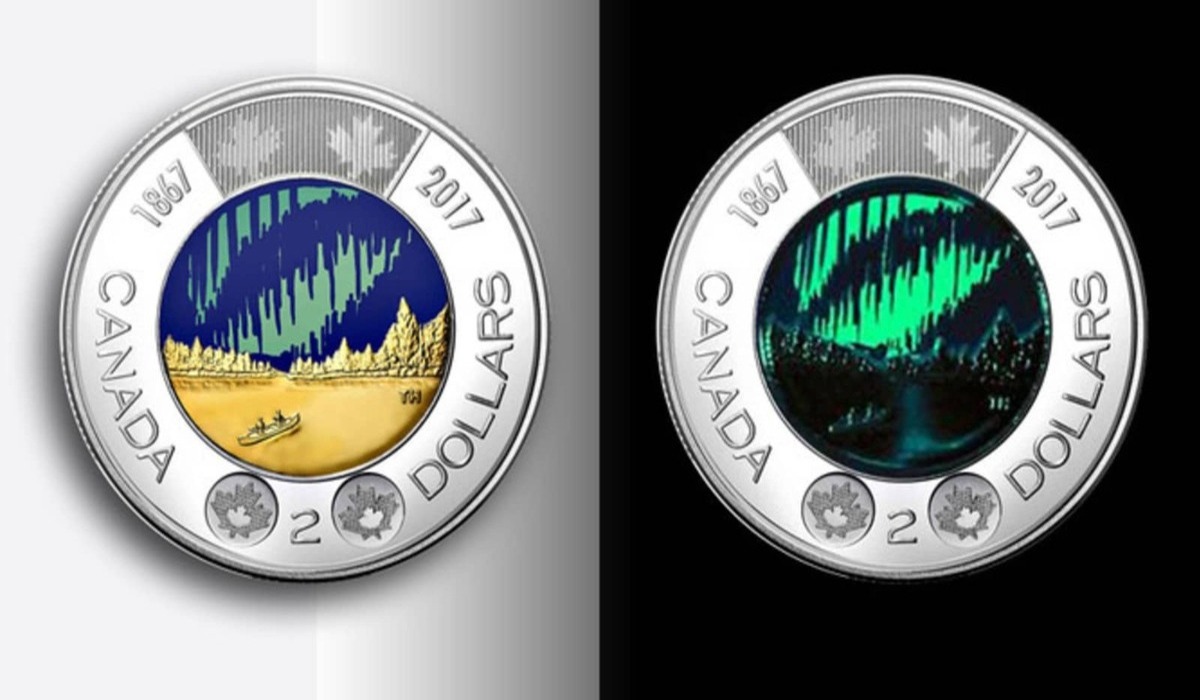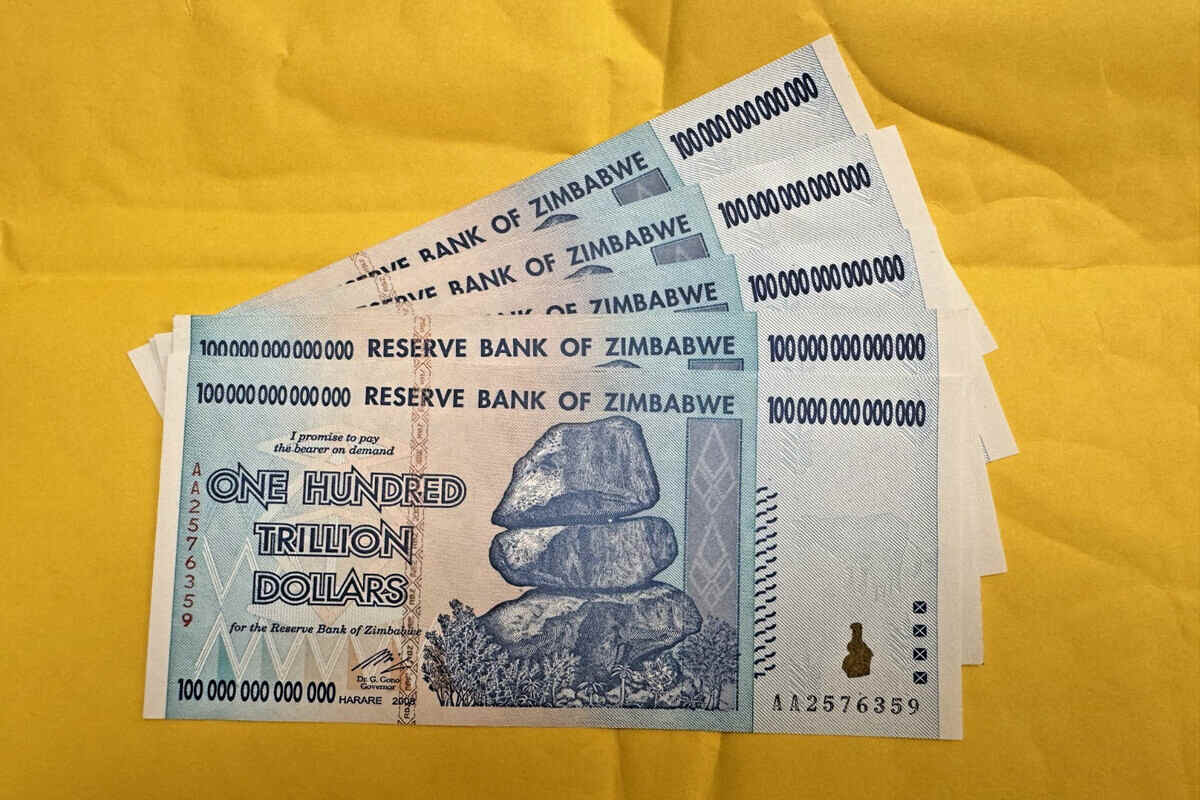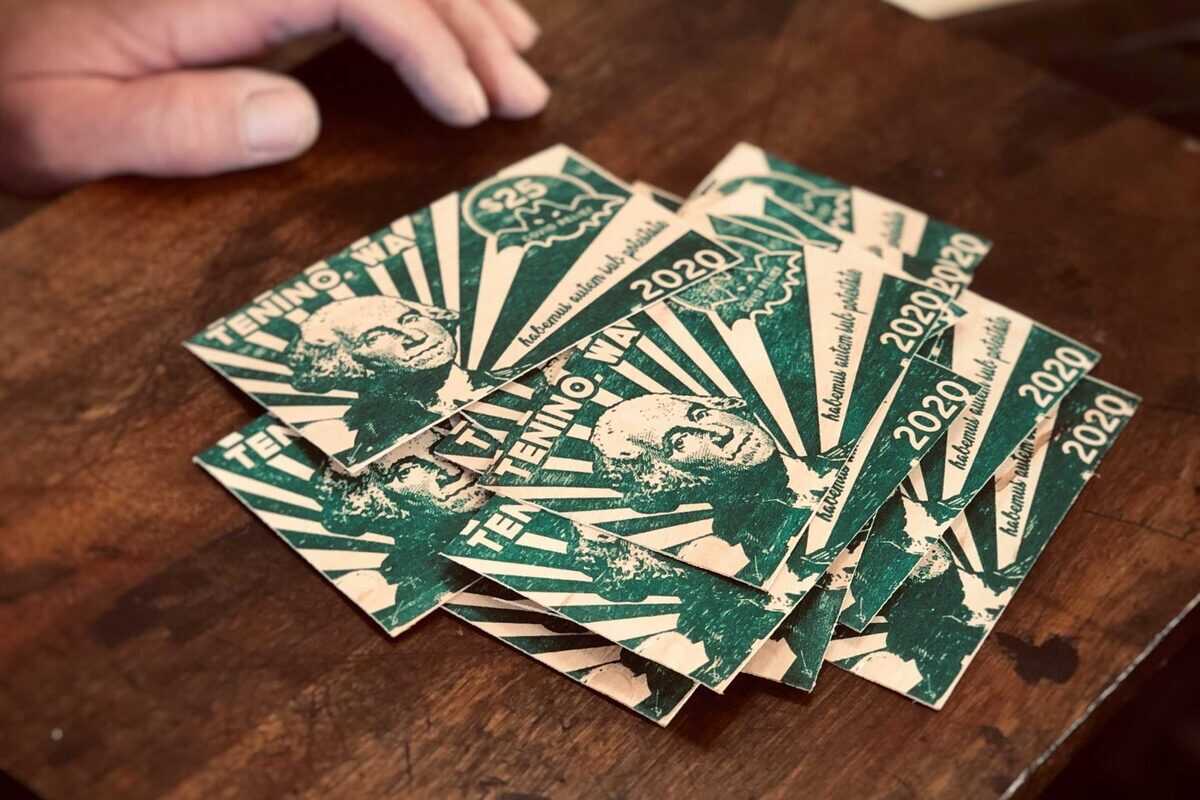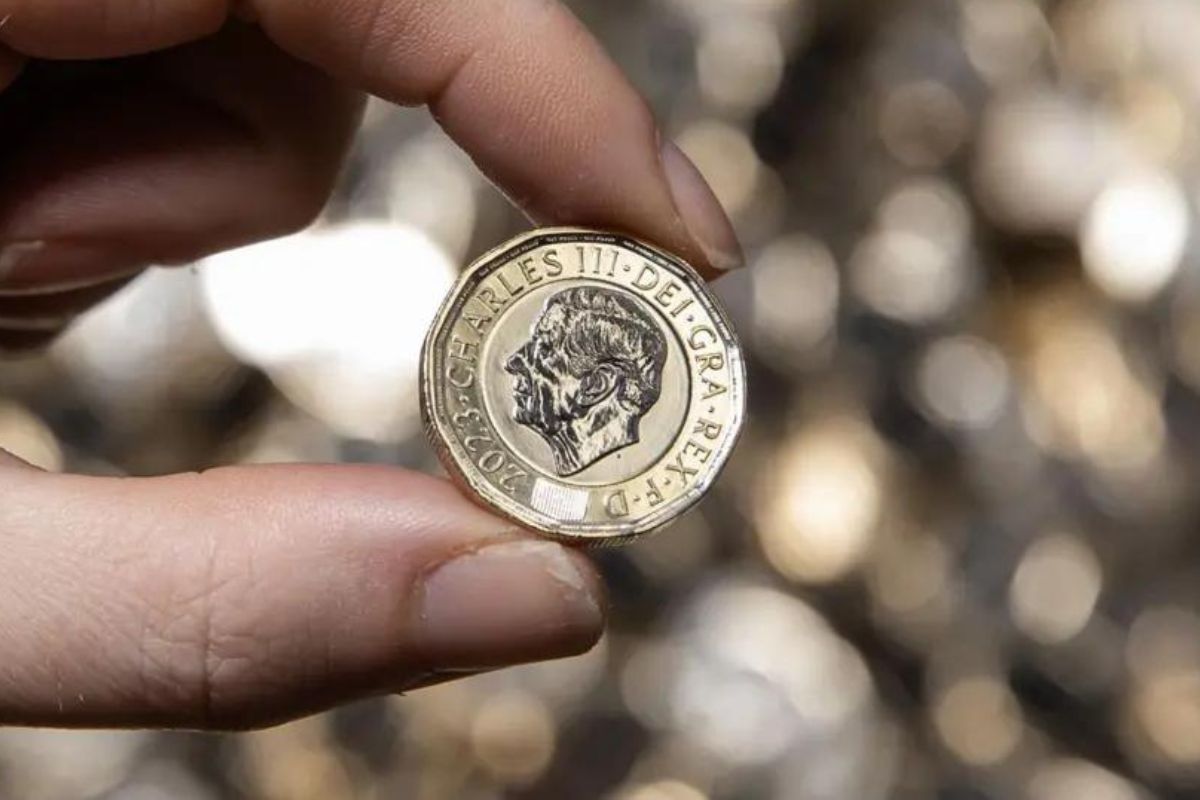13 Fun Facts About Money You Probably Didn't Know
When you think about money, the first things that come to mind are likely paper bills, coins, credit cards and maybe some concerns about managing expenses. But there's more to money than just what's in your wallet or on your banking app. In fact, some of the most interesting facts about money involve bizarre forms of currency, extreme historical events, and even glow-in-the-dark coins.
If you're looking for facts about money that are truly surprising, you've landed in the right spot. From money that glows in the dark to notes that contain traces of cocaine, here are 13 facts that are full of surprises and historical oddities.
1. The Island Where Giant Stones Were Legal Tender

Let’s kick things off with one of the oldest and strangest forms of money. On the island of Yap in Micronesia, legal tender once came in the form of giant limestone discs called rai stones. Some of these weighed more than a car! They weren’t carried around - ownership was a matter of public record. If you bought something, you didn’t move the stone; everyone just agreed it now belonged to someone else. Talk about a heavy investment.
These massive stones served as a symbol of wealth and social status and were often handed down through generations. Because their value was largely based on their story and origin (some were transported from other islands), a valuable coin wasn’t just about weight - it was about legend. It’s an amazing glimpse into how community consensus can give meaning to even the most cumbersome form of money.
2. Chocolate Was Once a Currency
If you’re a chocolate lover, you’ll appreciate this: the ancient Aztecs used cacao beans as a form of money. A single bean could buy you a tamale, while a few dozen might fetch you a rabbit. Not only could you spend your “cash,” you could also drink it - which makes it one of the most interesting things about money ever devised.
Cacao beans were so valuable that even the Spanish adopted them temporarily after colonisation. Some Aztec taxes were paid in cacao, and it was even used to pay workers. In modern terms, imagine getting paid in chocolate bars instead of bank transfers. Sweet deal? Maybe, until the beans melted.
3. Paper Money Came with Death Threats
Here’s how to use a counterfeit pen properly:
The earliest known paper money dates back over 1,000 years to China during the Tang Dynasty, with widespread use expanding under the Song Dynasty. The government took counterfeiting seriously - so seriously that early banknotes came with warnings like, "Whoever forges notes shall be beheaded."
The notes were printed on mulberry bark paper and backed by the government’s authority. They were used in large cities and eventually across regions. Unlike today’s Federal Reserve Banks which use microprinting, colour-shifting inks, and watermarks, ancient China relied on fear and capital punishment to maintain confidence in their currency.
4. Glow-in-the-Dark Coins Exist

Canada issued a commemorative coin in 2017 that glows in the dark. This $2 coin, also known as a toonie, lights up with the Aurora Borealis when viewed under UV light. It’s not just a gimmick - it was minted as a legal tender and circulated widely.
It marked Canada’s 150th anniversary and became a collector’s favourite almost immediately. The glow-in-the-dark effect is achieved through luminescent ink, and it’s the first circulating coin of its kind. A true blend of art and innovation, and undoubtedly one of the most interesting money facts on this list.
5. The $100 Trillion Note That’s Now a Souvenir

In 2008, Zimbabwe printed a bank note worth 100 trillion Zimbabwean dollars during a period of hyperinflation. Due to the rapid decline of the currency’s value, this enormous figure had little buying power - it might get you a loaf of bread, if you were lucky.
Ironically, this note, once symbolic of economic collapse, is now a popular commemorative coin-style souvenir among currency collectors. On websites like eBay, these notes often sell for more than $30 USD. What was once a worthless bill now stands as a historical reminder of how quickly money can lose value - and then gain it again in a different form.
6. Dirty Money? Literally
Studies have shown that the vast majority of dollar bills in circulation have traces of cocaine on them. This doesn’t necessarily mean every bill was used for illicit activity - contamination spreads easily through ATM machines, wallets, and counting devices.
In cities like London and New York, it’s been found that up to 99% of paper bills carry such residues. The contamination can spread from just a few heavily used bills to thousands more through sheer contact. So yes, your cash might be dirtier than you thought - a sobering insight into the journey of a typical bank note.
Ready to sell?
Are you ready to sell your currency? Stop waiting and request a Shipping Kit. We will provide everything you need to ship and receive funds for currencies you own.
7. Some Coins Cost More to Make Than They’re Worth
As of 2024, it costs about 3.7 cents to mint a 1-cent coin (aka a modern penny), and nearly 14 cents to make a nickel. That means every time one of these copper coins is made, the U.S. government loses money.
Despite discussions to eliminate these coins, they remain in circulation due to tradition and public sentiment. The Federal Reserve Banks and U.S. Mint continue producing them in massive quantities, even though their cost exceeds their value. That’s one ironic twist in the economics of modern currency - making money can actually cost money.
8. Wooden Money Helped a Town Survive

During the Great Depression, Tenino, Washington, issued paper bills made of wood after its only bank collapsed. These wooden bills became legal tender within the town and were accepted by businesses and residents alike.
Decades later, during the COVID-19 crisis, the town revived this quirky solution. Locals could receive the wooden script as part of a personal loan program to stimulate local spending. These limited-edition bills, now sought after as a commemorative coin-style collector's item, remind us how creativity and community spirit can bridge economic gaps.
9. Some Money Is Made of Cotton and Linen
You might call it "paper money," but U.S. bills in circulation are actually made from a fabric blend: 75 percent cotton and 25 percent linen. This unique composition makes them more durable than typical paper, which is why they can survive multiple double folds and even the occasional trip through the washing machine.
The special fabric also allows detailed printing and sophisticated anti-counterfeit features. Money engravers rely on this texture to add micro-detail, raised printing, and embedded threads. So next time you're holding a dollar bill, remember - it’s more like a piece of cloth than a piece of paper.
10. Famous Faces on Your Cash
You probably know George Washington appears on the $1 bill and Abraham Lincoln on the $5. But did you know that Martha Washington is the only woman to appear on a U.S. note as a primary portrait? She was featured on the $1 silver certificate in the late 1800s.
Meanwhile, Andrew Jackson graces the $20 bill - though there have been campaigns to replace him with Harriet Tubman due to his controversial policies. These portraits are created by skilled money engravers, who work with extreme precision to design lasting images. Even small details, like the olive branch in the eagle’s talons, carry symbolic meaning.
11. Ridges on Coins Are for Safety
Ever noticed those ridges on the edges of coins? They’re not just decorative. Back in the day, people would shave off small amounts of precious metal from gold coins or silver coins, a practice called "clipping."
These ridges made it easy to detect tampering, helping maintain trust in coins’ value. Today, even base-metal coins like the dollar coin continue the tradition - partly for security, and partly to maintain the classic tactile experience of older money. It’s a clever design that links our fun facts about money back to practical needs.
There’s also a psychological factor - many people associate the ridged edge with authenticity. Plus, the next time you do a coin toss, you might thank those ridges for helping the coin flip properly in mid-air. Small features like this are often overlooked but play a big role in how we interact with our currency.
12. The U.S. Once Used Tea as Currency
In 19th-century China and parts of Central Asia, compressed tea bricks served as a widely accepted form of money. These bricks were easy to transport, durable, and had intrinsic value because they could also be brewed into tea.
Soldiers were known to shave pieces off for consumption or trade. In some places, tea was considered more stable than silver. That makes tea bricks one of the most interesting things about money - a currency you could sip!
Interestingly, the bricks often bore official seals to indicate their weight and quality - very much like today's certified gold coins or silver coin markings. The concept blurred the line between consumable goods and currency, demonstrating how societies adapt resources into monetary tools.
13. There’s a British Coin with a Typo

One British coin, a 20p piece minted in 2008, became a collector’s treasure because of a production error: the year was accidentally omitted. These “dateless” coins, though still considered legal tender, became highly collectible overnight.
Because of their rarity and novelty, they began selling for up to 100 British pounds. This accidental minting mistake transformed an everyday copper coin into a valuable coin - proving that sometimes, even a tiny error can lead to big value in the world of interesting facts about money.
This isn’t just a quirky mishap - it highlights the importance of quality control in minting processes. Even today, money engravers work under tight scrutiny to avoid such mistakes, making the typo coin a legendary slip-up that still circulates among collectors.
More Than Just Coins and Notes
Did you know any of these already? Next time you’re holding a coin or note, take a second to think about where it’s been, how it was made, and what strange story it might carry. Behind every dollar bill, copper coin, or paper money is a world of human creativity, problem-solving, and yes - the occasional printing blunder.
And while we may live in a digital age of swipes, taps, and credit cards, these tangible pieces of currency still have a lot to say. If anything, these fun little facts remind us that money, in all its forms, is far more than just numbers - it’s a journey. And what a weird and wonderful journey it is.
Ready to buy?
Are you ready to buy your currency? Stop waiting and request a Shipping Kit. We will provide everything you need to ship and receive funds for currencies you own.


